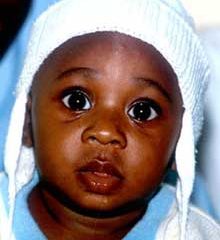
A global mass killer could be tamed with the aid of satellite technology. Scientists are using data from Meteosat to help model and predict outbreaks of malaria. “Satellite sensor data hold out hope for the development of early-warning systems for diseases such as malaria, which kills between 1 and 2 million people each year,” says David Rogers, of Oxford University’s Department of Zoology.
Rogers is part of a team based in Oxford, Nairobi and at NASA’s Goddard Space Flight Center, Marylan
Researchers from the Technology Foundation STW and the University of Twente, in cooperation with Smit Transformatoren and Smit Draad, have developed a prototype coil for a superconducting transformer which is not only light and compact but also energy-efficient. A keen interest has already been expressed by several companies.
The coil is made from superconducting wires, insulated using a newly patented method. Furthermore, together with Smit Transformatoren the researchers have developed a m
Eddies appear in the ocean like in the atmosphere. Atmospheric eddies are short-lived, extremely speedy, and often very hazardous. Oceanic eddies are slower and can be observed only with the use of special equipment, but these eddies gently mixing ocean waters affect the climate in general.
For more than ten years specialists from the Pacific Institute of Oceanology in Vladivostok have observed the oceanic eddies formed at the confluence of two largest undercurrents in the west of the Pacif
The Society for General Microbiology (SGM) has launched Microbiology Online – a new web site for biology teachers and technicians in schools and colleges. The site is packed with information and resources to support microbiology teaching at all key stages and post-16 level.
In return for completing an on-line feedback form the SGM are offering schools the chance to win either a World of Microbes teaching pack for KS2 or a bioreactor kit worth £105, which is suitable for KS3/4 and post-16. T
In the powerful, fast-fading realm of gamma-ray bursts, scientists say they have detected for the first time a lingering afterglow of the shortest types of bursts, which themselves disappear within a second.
This afterglow, radiating in X rays, may provide crucial insight into what triggers the mysterious bursts, the most energetic explosions in the Universe, second only to the big bang in total power. Previously, scientists had only detected the afterglow of longer bursts, which can last fr
Nearly fifty years ago, researchers discovered that when cells in laboratory cultures are infected by a virus, they secrete a substance that protects other cells from infection. In 1957 Alick Issaks and Jean-Jacques Lindenmann traced this effect to a protein called interferon, a molecule now known to play a key role in the immune system. Human and animal cells produce it in a rapid “first wave” response to infections. Since its discovery, scientists have sought to use this natural substance to cure a